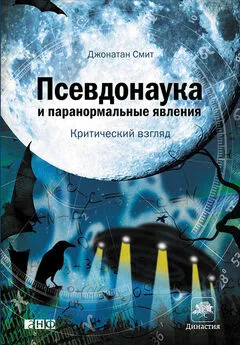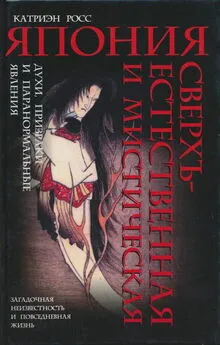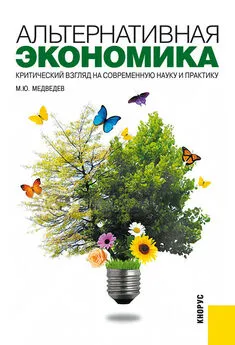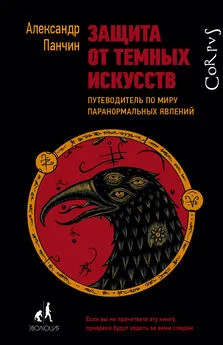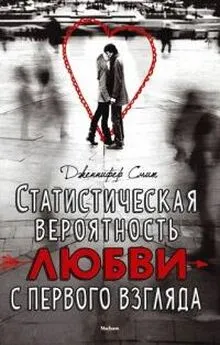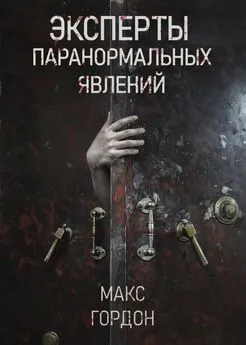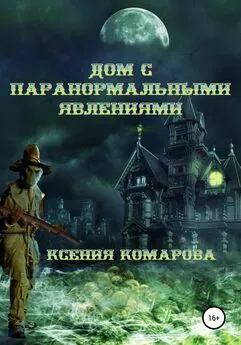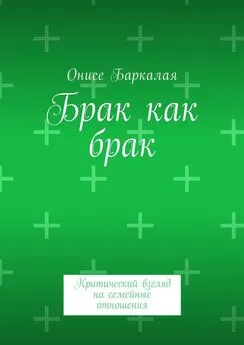Джонатан Смит - Псевдонаука и паранормальные явления: Критический взгляд
- Название:Псевдонаука и паранормальные явления: Критический взгляд
- Автор:
- Жанр:
- Издательство:Литагент Альпина
- Год:2016
- Город:Москва
- ISBN:978-5-9614-4292-2
- Рейтинг:
- Избранное:Добавить в избранное
-
Отзывы:
-
Ваша оценка:
Джонатан Смит - Псевдонаука и паранормальные явления: Критический взгляд краткое содержание
Псевдонаука и паранормальные явления: Критический взгляд - читать онлайн бесплатно ознакомительный отрывок
Интервал:
Закладка:
DuBois, Allison. Allisondubois.com
Dulin, D. (2005). «Soul Advice.» A&U Magazine, December. Retrieved April 1, 2008 from: www.aumag.org/coverstory/December05cover.html
Edward, J. (1998). One last time. New York: Berkley Trade.
Edward, J. (2001). Crossing Over. San Diego, CA: Jodere Group.
Edward, J. (2003). After life. New York: Princess Books.
Endersby, A. (2002). Talking the John Edward Blues. SkepticReport. Retrieved April 1, 2008 from: www.skepticreport.com/psychicpowers/jeblues.htm
Festinger, L. (1957). A theory of cognitive dissonance. Stanford, CA: Stanford University Press.
Garb, H., Lilienfeld, S., Wood, J., 8c Nezworski, M. (2002, October). Effective use of projective techniques in clinical practice: Let the data help with selection and interpretation. Professional Psychology: Research and Practice, 33 (5), 454.
Geller, U. (2007). Uri Geller's Full Biography. Retrieved 27 November, 2007 from: site.uri-geller.com
Gilovich, T., Savitsky, K., & Medvec, V. J. (1998). The illusion of transparency: Biased assessments of others' ability to read our emotional states. Journal of Personality and Social Psychology, 75, 332–346.
Glick, P., Gottesman, D., & Jolton, J. (1989). The fault is not in the stars: Susceptibility of skeptics and believers in astrology to the Barnum effect. Personality and Social Psychology Bulletin, 15, 572–583.
Glick, P., & Snyder, M. (1986). Self-fulfilling prophecy: The psychology of belief in astrology. Humanist, 46, 20–25, 50.
Goldstein, E. B. (2007). Sensation and perception. Belmont, CA: Thomson Wadsworth.
Hyman, R. (2003a). How not to test mediums: Critiquing the afterlife experiments. Skeptical Inquirer, 27. Retrieved April 1, 2008 from: www.csicop.org/si/2003–01/medium.html
Hyman, R. (2003b). Follow up reply. Skeptical Inquirer, 27. Retrieved April 1, 2008 from: www.csicop.org/si/2003–05/follow-up-hyman.html
Kihlstrom, J. F. (1962). Stanford Hypnotic Susceptibility Scale. Palo Alto, CA: Consulting Psychologists Press.
King, L. (2001). Are psychics for real? Larry King Live, March 6, 2001. Retrieved April 1, 2008 from: transcripts.cnn.com/TRANSCRIPTS/0103/06/lkl.00.html
Kirsch, I., & Braffman, W. (2001). Imaginative suggestibility and hypnotizability. Current Directions in Psychological Science, 4, 57–61.
Lancaster, R. (2007). Stop Sylvia Browne, www.stopsylviabrowne.com
Lilienfeld, S. O., Lynn, S. J., & Lohr, J. M. (Eds.). (2003). Science and pseudoscience in clinical psychology. New York: Guilford.
Lilienfeld, S. O., Ruscio, J., & Lynn, S. J. (Eds.). (2008). Navigating the mindfield: A guide to separating science from Pseudoscience in mental health. Amherst, NY: Prometheus Books.
Martinez-Conde, S., & Macknik, S. L. (2008). Magic and the brain. Scientific American, 299 (6), 72–79.
McClain, C. (2005). Varied readings on Arizona psychic. Arizona Daily Star, January 17. Retrieved April 4, 2009 from: web.archive.org/web/20060507055430/
www.azstarnet.com/dailystar/dailystar/57187.php
Memorable Quotes (1999). Memorable quotes for «Family Guy». Retrieved April 1, 2008 from: stopsylvia.com/home/
Nickell, J. (2004). Psychic Sylvia Browne once failed to foresee her own criminal conviction. Skeptical Inquirer, 28 (5), November/December, p. 11.
Nickerson, R. S. (1998). Confirmation bias: A ubiquitous phenomenon in many guises. Review of General Psychology, 2, 175–220.
Novus Spiritus. Retrieved April 1, 2008 from: www.novus.org/home/faq.cfm
Pronin, E., Gilovich, Т., & Ross, L. (2004). Objectivity in the eye of the beholder: Divergent perceptions of bias in self versus others. Psychological Review, 111, 781–799.
Pronin, E., Lin, D. Y., & Ross, L. (2002). The bias blind spot: Perceptions of bias in self versus others. Personality and Social Psychology Bulletin, 28, 369–381.
Randi, J. (1982a). Flim Flam!. Buffalo, NY: Prometheus Books.
Randi, J. (1982b). The truth about Uri Geller. Buffalo, NY: Prometheus Books.
Randi, J. (1993). The mask of Nostradamus: The prophecies of the world's most famous seer. Amherst, NY: Prometheus.
Randi, J. (2006). John Edward Revisited. Swift: Online newsletter for the JREF. April 21. Retrieved April 1, 2008 from: www.randi.org/jr/2006-04/042106edward.html#i1
Randi, J. (2007). An encyclopedia of claims, frauds, and hoaxes of the occult and supernatural. Uri Geller. Retrieved April 1, 2008 from: www.randi.org/encyclopedia/Geller,%20Uri.html
Religioustolerance. (2007). Retrieved April 1, 2008 from: www.religioustolerance.org/end_wrld.htm
Rowland, I. (2005). The Full Facts Book of Cold Reading (4th ed.). London: Ian Rowland, Ltd.
Schick, Т., & Vaughn, L. (2005). How to think about weird things: Critical thinking for a new age (4th ed.). New York: McGraw-Hill.
Schwartz, G. (2003a). The Afterlife Experiments. New York: Atria Books.
Schwartz, G. (2003b). How not to review mediumship research: Understanding the ultimate reviewer's mistake. Retrieved April 1, 2008 from: www.enformy.com/Gary-reHymanReview.htm
Shermer, M. (2002). Why people believe in weird things: Pseudoscience, superstition, and other confusions of our time. New York: Henry Holt.
Shermer, M. (2005). Science friction. New York: Henry Holt.
Shor, R. E., & Orne, E. C. (1962). Harvard Group Scale of Hypnotic Susceptibility. Palo Alto, CA: Consulting Psychologists Press.
Sternberg, R. J. (2006). Cognitive psychology (4th ed.). Belmont, CA: Thomson/Wadsworth.
Stone, J. (2001). Behavioral discrepancies and the role of construal processes in cognitive dissonance. In G. B. Moskowitz (Ed.), Cognitive social psychology: The Princeton symposium on the legacy and future of social cognition (pp. 41–58). Mahwah, NJ: Erlbaum.
The Two Percent Company. (2005). Medium: The dubious claims of Allison DuBois. March. Retrieved April 1, 2008 from: www.twopercentco.com/rants/archives/2005/03/medium_the_dubi_4.html
The Two Percent Solution. (2005). Retrieved April 4, 2009 from: www.twopercentco.com/rants/archives/2006/07/polar_opposites.html
Time (March 12, 1973). The magician and the think tank. Retrieved April 1, 2008 from: www.time.com/time/magazine/article/0,9171,944639,00.html?promoid=googlep
Turnbull, С. M. (1961). Some observations regarding the experiences and behavior of the BaMbuti Pygmies. American Journal of Psychology, 74, 304–308.
Vorauer, J. D. (2001). The other side of the story: Transparency estimation in social interaction. In G. B. Moskowitz (Ed.), Cognitive social psychology: The Princeton symposium on the legacy and future of social cognition (pp. 371–385). Mahwah, NJ: Erlbaum.
Vorauer, J. D., & Claude, S. (1998). Perceived versus actual transparency of goals in negotiation. Personality and Social Psychology Bulletin, 24, 371–385.
Wark, D. M. (2006). Alert hypnosis: A review and case report. American Journal of Clinical Hypnosis, 48, 291–300.
Watson, P. C. (1960). On the failure to eliminate hypotheses in a conceptual task. Quarterly Journal of Experimental Psychology, 12, 129–140.
Глава 8
Ackil, J. K., & Zaragoza, M. S. (1998). Memorial consequences of forced confabulation: Age differences in susceptibility to false memories. Developmental Psychology, 34, 1358–1372.
Atkinson, R. C., & Shiffrin, R. M. (1968). Human memory: A proposed system and its control processes. In K. W. Spence & J. T. Spence (Eds.), The psychology of learning and motivation: Vol. 2. Advances in research and theory. New York: Academic Press.
Begg, I., & Armour, V. (1991). Repetition and the ring of truth: Biasing comments. Canadian Journal of Behavioral Science, 23, 195–213.
Begg, I. M., Anas, A., & Farinacci, S. (1992). Dissociation of processes in belief: Source recollection, statement familiarity, and the illusion of truth. Journal of Experimental Psychology, 121, 446–458.
Belluck, P. (1997). «Memory» therapy leads to a lawsuit and big settlement. The New York Times, Page 1, Column 1, November 6. Retrieved April 1, 2008 from: query.nytimes.com/gst/fullpage.html?res=9B04E7D91F30F935A35752C1A961958260
Boyd, R. (2008). Do people only use 10 percent of their brains? Scientific American. Retrieved April 1, 2008 from: www.sciam.com/article.cfm?id=people-only-use-10-percent-of-brain&page=1
Brown, A. S. (2004). The Deja vu experiences: Essays in cognitive psychology. East Sussex, England: Psychology Press.
Cutler, B. L., & Penrod, S. D. (1995). Mistaken identification: The eyewitness, psychology, and the law. New York: Cambridge University Press.
Echterhoff, G., Higgins, E. Т., Kopietz, R., & Groll, S. (2008). How communication goals determine when audience tuning biases memory. Journal of Experimental Psychology: General, 137, 3–21.
Gloor, P. (1990). Experiential phenomena of temporal lobe epilepsy: Facts and hypotheses. Brain, 113, 1673–1694.
Hasher, L., Goldstein, D., & Toppino, T. (1977). Frequency and the conference of referential validity. Journal of Verbal Learning and Verbal Behavior, 16, 107–112.
Hicks, J. L., & Marsh, R. L. (2001). False recognition occurs more frequently during source identification than during old-new recognition. Journal of Experimental Psychology: Learning, Memory, and Cognition, 27, 375–383.
Higgins, E. T. (1992). Achieving «shared reality» in the communication game: A social action that creates meaning. Journal of Language and Social Psychology, 11, 107–131.
Hyman, I. E., & Pentland, J. (1995). The role of mental imagery in the creation of false memories. Journal of Memory and Language, 35, 101–117.
Johnson, M. K. (2006). Memory and reality. American Psychologist, 61, 760–771.
Johnson, M. K., Hashtroudi, S., & Lindsay, D. S. (1993). Source monitoring. Psychological Bulletin, 114, 3–28.
Loftus, E. F. (1996). Eyewitness testimony. Cambridge, MA: Harvard University Press.
Loftus, E. F. (1997). Creating false memories. Scientific American, 277, 70–75.
Loftus, E. F., & Ketcham, K. (1994). The myth of repressed memory. New York: St. Martin's.
McNally, R. J. (2004). The science and folklore of traumatic amnesia. Clinical Psychology: Science and Practice, 11, 29–33.
Moskowitz, G. B. (2005). Social cognition. New York: Guilford Press.
Osborn, H. F. (1884). Illusions of memory. North American Review, 138, 476–486.
Radford, B. (1999). The ten-percent myth. Skeptical Inquirer, 23, 52–53. Retrieved February 28, 2008 from: csicop.org/si/9903/ten-percent-myth.html
Schacter, D. L. (1996). Searching for memory – the brain, the mind, and the past. New York: Basic Books.
Skurnik, I., Yoon, C., Park, D. C., & Schwartz, N. (2005). How warnings about false claims become recommendations. Journal of Consumer Research, 31, 713–724.
Squire, L. R. (2004). Memory systems of the brain: A brief history and current perspective. Neurobiology of Learning and Memory, 82, 171–177.
Sternberg, R. J. (2006). Cognitive psychology. Belmont, CA: Thompson.
Stevenson, R. L. (2004). Essays in the art of writing. Adelaide: Ebooks.
Читать дальшеИнтервал:
Закладка:
